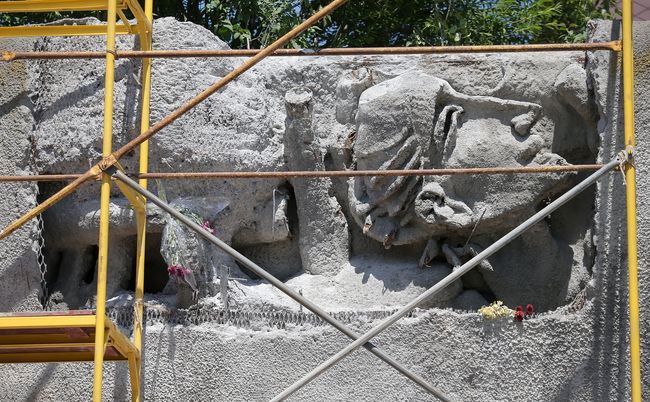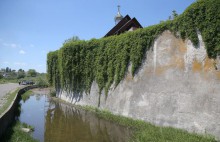Let us recall that the Wall, which was more than 200 meters long, took 13 years to erect in the Baikove Cemetery, only for it to be concreted over by the order of the Communist leadership in 1982, and stay unrestored for over 30 years! At the opening ceremony, one of the authors of the Wall, Volodymyr Melnychenko, was joined by Kyiv City State Administration officials and organizers of the Kyiv Art Week as they launched restoration work on one of the capital’s most significant memorials...
The Kyiv Art Week, which this year was held from May 18 through 27, is an international festival of art which is being held for the third year in a row. The event involved: exhibitions in 12 artistic spaces of the capital, including the leading museums; discussions and lectures; film screenings and musical parties; and also a five-day-long artwork fair. However, the best-known contemporary art festival to be held in the capital tries, first of all, to create a better future of art rather than lament past glories. It is no wonder, then, that it has even managed to turn a past defeat into a future victory. The “Funnel of Time” exhibition, curated by Viktoria Burlaka, Andrii Sydorenko, and Viacheslav Tuzov, sent a clear signal on the “futurological” direction of the Kyiv Art Week. Launched in the framework of the festival at the Ukrainian Institute of Contemporary Art Problems, the exposition included works by young Ukrainian artists. The only participant who is likely well-known among contemporary art aficionados was Anton Lohov. Specially for the project, he created a large-scale installation.
By inviting young people to reflect “on the time and on themselves,” curators of the “Funnel of Time” effectively offered each artist the complete freedom to create what they desire in the manner they prefer.

Something like a majority of “young people” had opted for “manual labor.” Instead of videos, they stubbornly created paintings. Installations and artistic photos occupied the honorable second position among their interests. Videos, however... (Yes, Sydorenko himself is a famous artist, and primarily a painter.) Still, the fact remains the fact. Also, contemporary painting is, indeed, coming back into fashion in the West.
The second significant difference was that humor, irony, and self-irony became for artists an important means of self-exploration and comprehension of the Universe around us. For instance, Anna Lehenka’s installation, which reflected her contention that “life is reminiscent of the film Groundhog Day,” contained a desk with a computer, papers, etc. For a press-papier, it had... a dildo. Another work worth mentioning is History.fin by Oleksandra Dotsok. “A crystal Soviet vase is a symbol of that period of our history. The first vase is a molded copy of a crystal vase. Each subsequent one is a copy of the previous one. These vases are a direct illustration of the transfer of information from one source to another. Each subsequent copy loses details of the previous one and acquires new ones,” the artist explained.
Meanwhile, my observations of what our young artists consider to be a model for imitation are somewhat disappointing. This is because it is much too predictable. I say so after looking at “spatial” experiments with the help of mirrors (“like Olafur Eliasson does”) featured in some works on display, or plaster casts of the artist’s own arms, legs, and other body parts (“like Anna Zviahintseva does”), etc… The Kyiv Art Week takes place every year, and “live” art sales are a more accurate indication of people’s true worth in the world of art than any competition.







